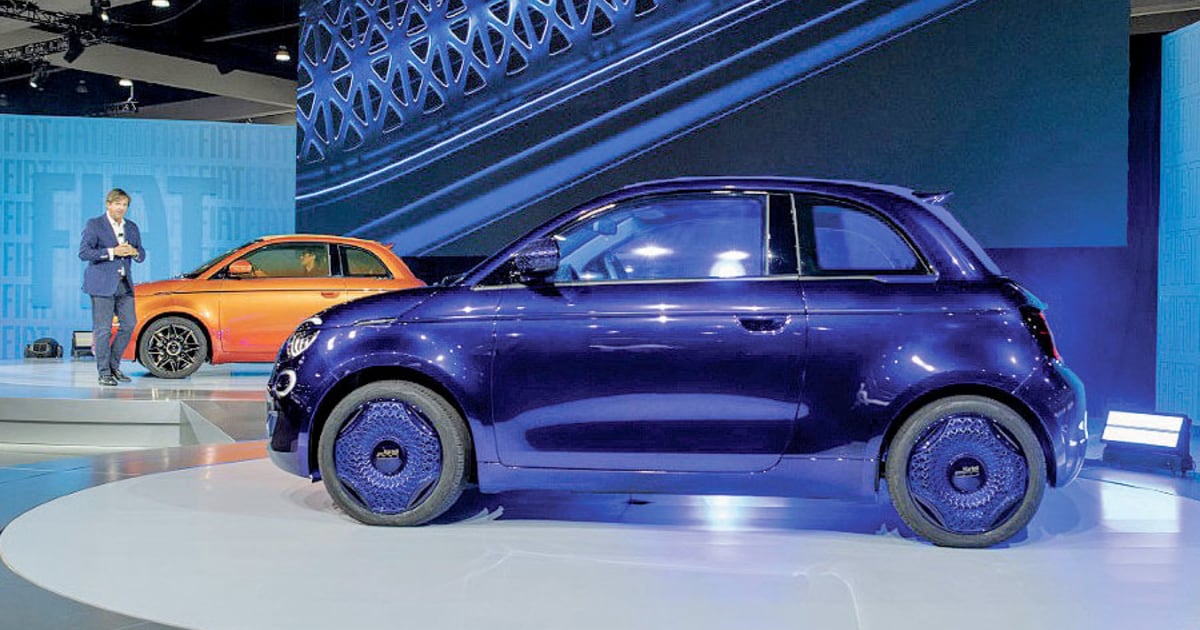
Stellantis is breathing a little more life into Fiat, the Italian brand that’s been reduced to a solitary nameplate in North America.
It’s bringing the electric 500e back to the U.S. to take advantage of the industry’s ongoing electric “revolution,” brand CEO Olivier Francois said. But after years of learning hard lessons about American consumer tastes, it doesn’t have grand volume ambitions for the car, he said, and there are no plans to expand the portfolio further.
Fiat, Francois told Automotive News, isn’t going to try to be everything to everybody.
“The lesson learned is humility,” he said of Fiat’s experience in the U.S. over the past decade. “America doesn’t need another brand, doesn’t need Fiat, doesn’t need an average mainstream car brand doing mainstream cars. We are not bringing anything really new to the party, but where America needs us is to make this polarizing, niche, unique statement, and that’s where the 500 and, today, this new 500 electric are playing. That’s our space, so we’ll stick to that space.”
The 500e is scheduled to reach the U.S. in the first quarter of 2024. The official reveal of the North American 500e will take place a year from now.
The most exciting part about the launch, Francois said at the Los Angeles Auto Show last week, is that Fiat is bringing the 500e to North America because it wants to — not because it feels a need to.
The brand’s ambition, he said, is “to feed America’s appetite for change, [and] in 2022, change starts with sustainable mobility.”
Fiat stopped selling the 500e — and the standard gasoline-powered 500 — stateside in 2019, leaving dealers with only the 500X today.
Randy Dye, chairman of the Stellantis National Dealer Council, views the 500e as a new lease on life for Fiat in the U.S. after years of little product support.
“The Fiat customer is very loyal,” Dye said in an interview. “They love their car, and so I think it’s exciting for the Fiat customer — the Fiat faithful, if you will — to be able to have an electric vehicle.”
As small as it is in North America, Fiat is the volume leader for Stellantis globally, and the European variant of the 500e, called the New 500, is among the top-selling electric vehicles in Europe.
The brand hasn’t come close to duplicating that success in the U.S. It returned in 2011 after a 27-year hiatus, pushing a youthful energy that drove it to more than 40,000 annual sales from 2012 to 2015. Fiat had targeted U.S. sales of 50,000 vehicles in 2011 and 78,000 in 2013 but peaked at 46,121 in 2014 before a steep dropoff beginning in 2016.
The 500e nameplate contributed minimally to those numbers, with former Fiat Chrysler Automobiles CEO Sergio Marchionne actually urging consumers in 2014 not to buy it. Each sale cost the company $14,000, he said. Marchionne, who wasn’t a fan of U.S. policies pushing automakers to build EVs, said at the time that he would sell the minimum number he needed to and “not one more.” He died in 2018, and in 2021 FCA merged with PSA Group to form Stellantis.
“The first generation electric 500 was a compliance vehicle, costing the company thousands of dollars per unit,” Sam Fiorani, vice president global vehicle forecasting for AutoForecast Solutions, said in email. “This new model has been developed from the ground up to be electric, making it more affordable to build and more profitable to sell. Unfortunately, the new 500e has the same issues as the old one: Americans don’t want small cars. Even with high gas prices and an improved drivetrain, the 500e will find it very tough to appeal to American buyers.”
But Fiat isn’t looking for mass appeal. Francois doesn’t plan to dump a ton of marketing cash into the 500e to persuade people to buy a car that isn’t for them. He said there is still a base of consumers out there in places such as Miami who are passionate about the brand and would consider buying a new model.
Francois said: “We don’t really need to achieve any targets. We are already at top production capacity, so we are capped.”